A Fabulous New Home for the King’s Crowns and Royal Diamonds
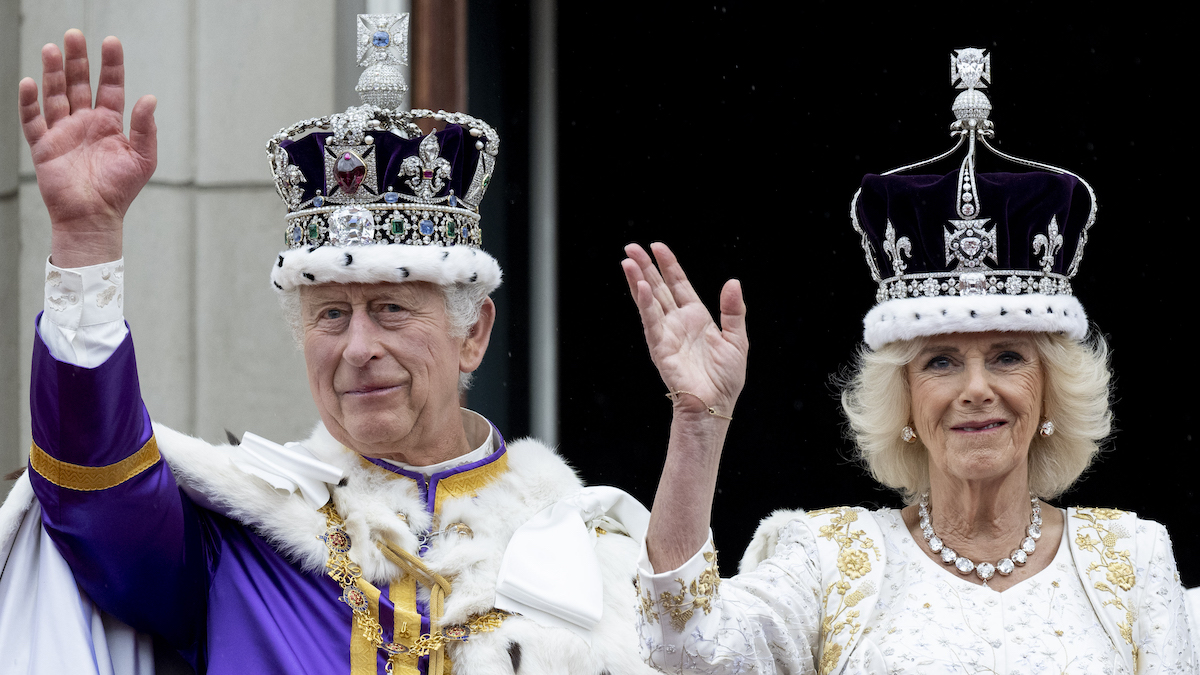
After a diamond-defying coronation, the Crown Jewels are back in the Jewel House where, following a formidable four-year restoration project, sponsored by former Crown Jeweller – Garrard, a new regal refit is unveiled at The Tower of London.
The Tower’s Treasury has been triumphantly transformed to reveal the stories behind some of the world’s most famous jewels and natural diamonds. Not least the controversial Koh I Noor diamond, diplomatically excluded from a consort’s crown for the first time since it was first set in Queen Alexandra’s Crown by Garrard in 1902, for the Coronation of her husband, Edward VII. And of course, the incomparable Cullinan diamond, discovered in South Africa in 1905 – and still the largest diamond found; it was given to Edward VII in 1907 and has been an important part of every Coronation since.
More than ever before, the exhibition delves deeply into the details and history of the royal regalia. The first room, entitled ‘Monarch’, illustrates the aged old tradition, of adapting previous crowns and resetting the most important and historic diamonds and jewels in a new frame for each new king or queen. For the first time ever, we see the frames of the State Crowns created for George I, George IV, and Queen Victoria; it is impossible not to notice the enormity of George IV’s Crown who, we learn, had possibly the most extravagant of all coronations in 1821! Another first is the inclusion of an exquisite sapphire, rather forlornly called The Unnamed Sapphire. This beautiful blue jewel was set in Queen Victoria’s State Crown for her coronation in 1838.
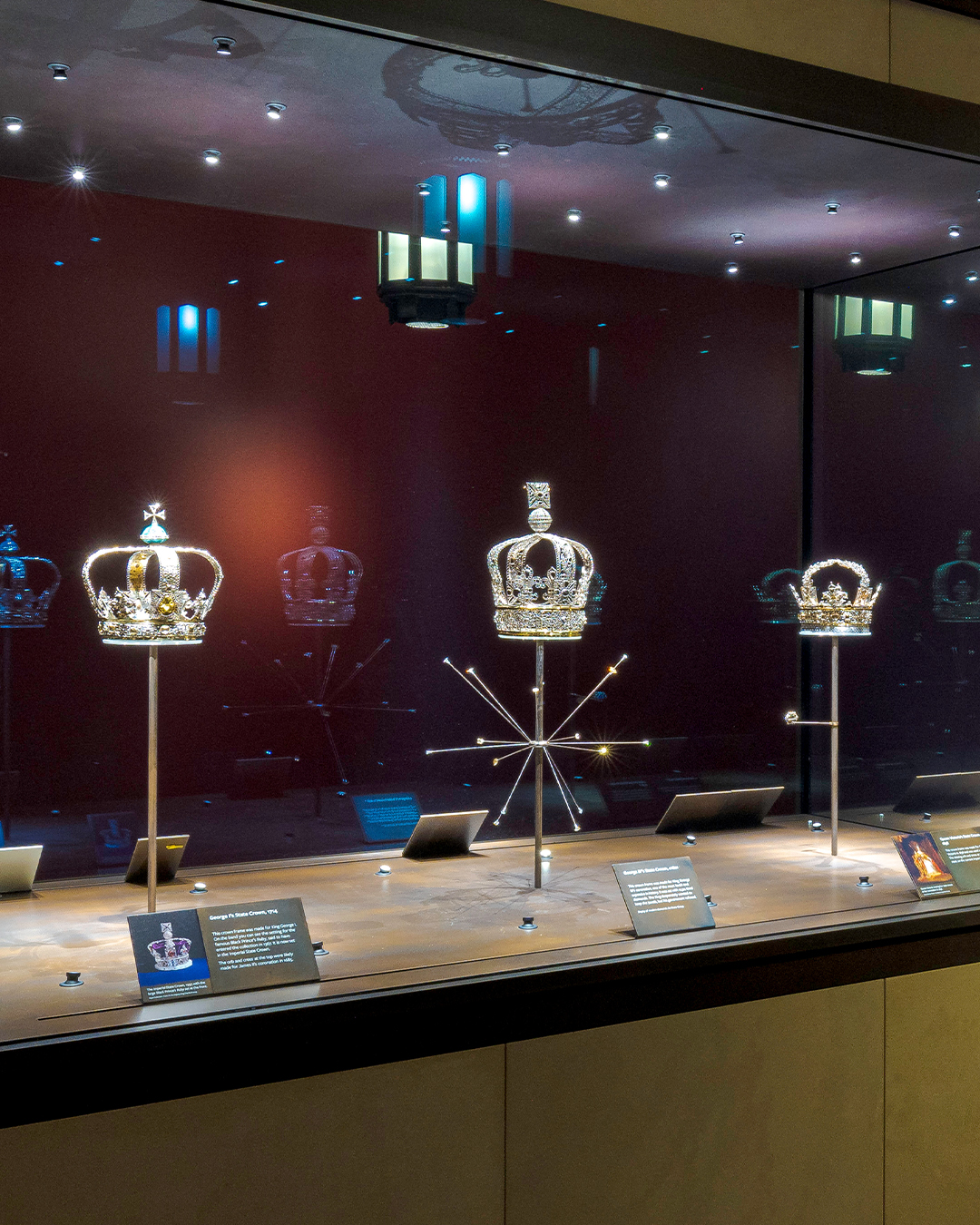
Courtesy of Historic Royal Palaces
‘Origins’, describes the provenances of both the Koh-I-Noor and the Cullinan, the two foremost diamonds in the Crown Jewels, and probably two of the most well-known in the world. There is no cloak and dagger here – it’s all decreed in a video shown at the display: the Koh-I-Noor was ‘taken’ by the East India Company from the child Maharajah Duleep Singh, and given to Queen Victoria. And we see precisely how it was presented to her: the enormous natural diamond was set in an exquisitely enameled armlet, the exact one of which is here to see – although of course set with replicas, it still shows the original Mughal cut of the diamond before Prince Albert had it re-cut to improve its sparkle and conform to Western tastes. Later in the exhibition, we see the actual incredible diamond fought over for centuries, set magnificently in the Queen Mother’s Crown.
The display describing the discovery of the Cullinan Diamond enables us, with simulated replicas, to really get an idea of the absolutely enormous size of the original diamond before it was meticulously cut (the hammer and knife used to cut it are here too) into nine diamonds, Five of which were used at the coronation all originally set by Garrard – the largest (503 carats) set in the Sceptre held by King Charles III, the second in the Imperial State Crown he wore on leaving the Abbey and then three set in Queen Mary’s Crown, worn by Queen Camilla at the coronation and on view later in the exhibition.
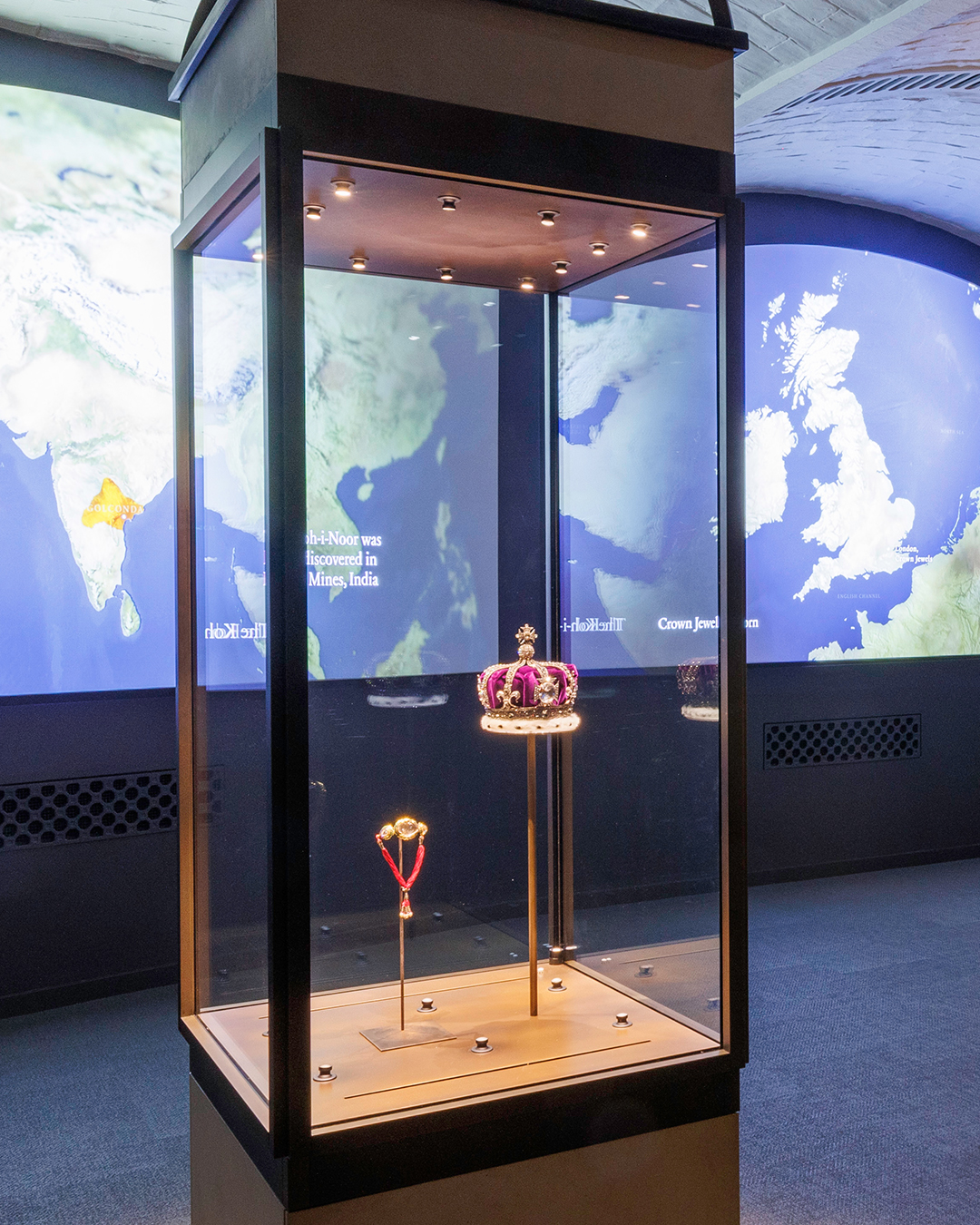
Courtesy of Historic Royal Palaces
The exhibition also explores how the original medieval jewels (some of which went back as far as King Edgar’s coronation in 973) were destroyed by Oliver Cromwell in 1649 – the Coronation Spoon, the only remaining item, is on display; as is a Commonwealth era coin – created from the melted down gold of those ancient items.
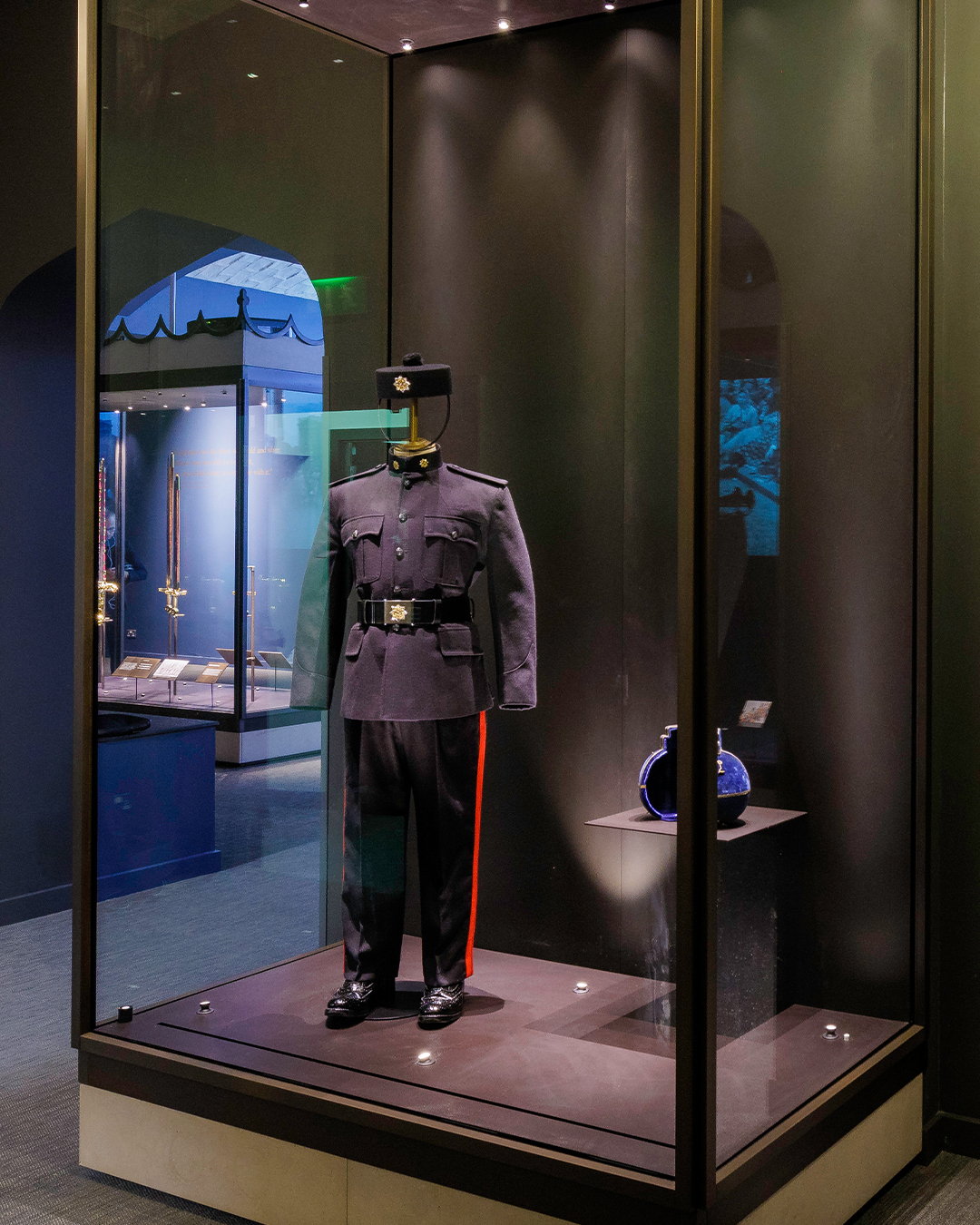
Courtesy of Historic Royal Palaces
Moving through ‘Guardians’, where we spot the uniform of a warden of the Crown Jewels at the tower from the 10 Queen’s Own Gurkha Logistic Regiment, we arrive in ‘Procession’ which, with a sweeping backdrop of clips from previous coronations, you cannot help but be overwhelmed with the grandeur of the pageantry, intensified by music we heard only weeks ago. Here we get to see much of the regalia used during the ceremony in Westminster. A cabinet shows ten Ceremonial Maces which are carried by the Serjeants at Arms, historic ceremonial royal bodyguards. Even today, a royal mace must be present for the UK Houses of Parliament to lawfully meet.
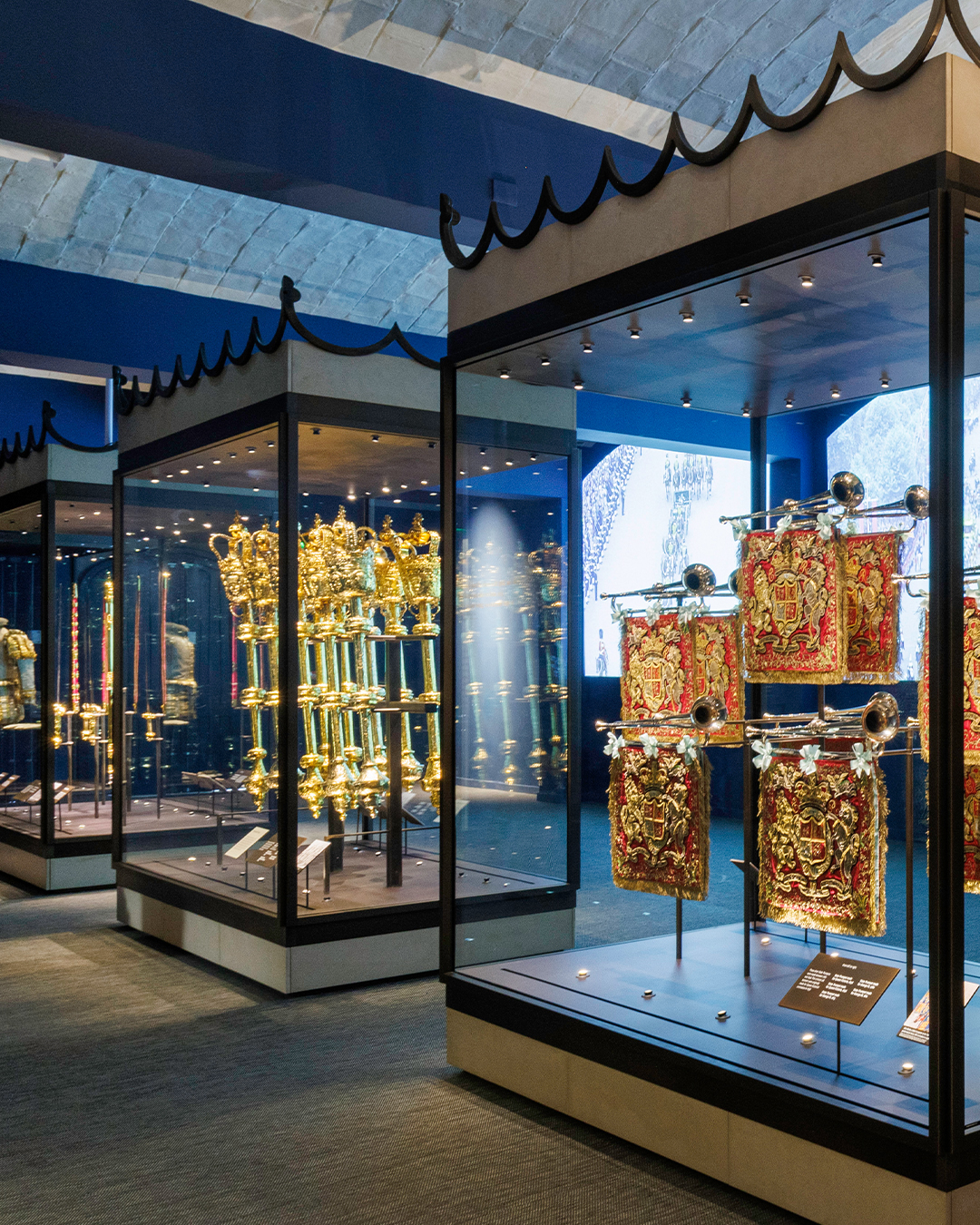
Courtesy of Historic Royal Palaces
The Treasury, in which the Crowns are presented, has had several to-scale replicas added, able to be examined by touch and are to give those with visual impairments a better experience. These include the Cullinan I diamond from the top of the Sovereign’s Sceptre with Cross, St Edward’s Crown and Queen Mary II’s Orb.
Perhaps my favourite new ‘addition’ is ‘Queen Victoria’s Small Diamond Crown.’ This exquisite and unusually small crown, created by Garrard in 1870, is set with 1187 diamonds in a delicate silver frame. It was commissioned by the Queen herself to be worn above her ‘widow’s cap’ for the State Opening of Parliament in 1871. Since her beloved husband and consort, Prince Albert, died in 1861, Victoria had hidden herself away, and until she died some forty years later only wore black dresses and white jewels – diamonds and pearls set in silver. This is without doubt, an incredibly special and emotional piece of jewelry, lent for the exhibition by King Charles from the Royal Collection, that we are privileged to see in this very magnificent display of majesty.

Getty Images
Charles Farris, Public Historian for the History of the Monarchy at Historic Royal Palaces, explains “The new Jewel House transformation will present the rich history of this magnificent collection with more depth and detail than ever before. With 2023 witnessing the first Coronation in 70 years, there has never been a better time for people to come and learn about the jewels and to appreciate these awe-inspiring objects in person.”
Whilst Suzanne Martinez of Lang Antiques in San Francisco believes that “The Crown Jewels are arguably the most historically significant pieces in the world – have long captivated American vintage jewelry lovers since we have no equivalent, so visitors from the USA will be thrilled to visit the new exhibition and immerse themselves in the experience, if traveling to London.”
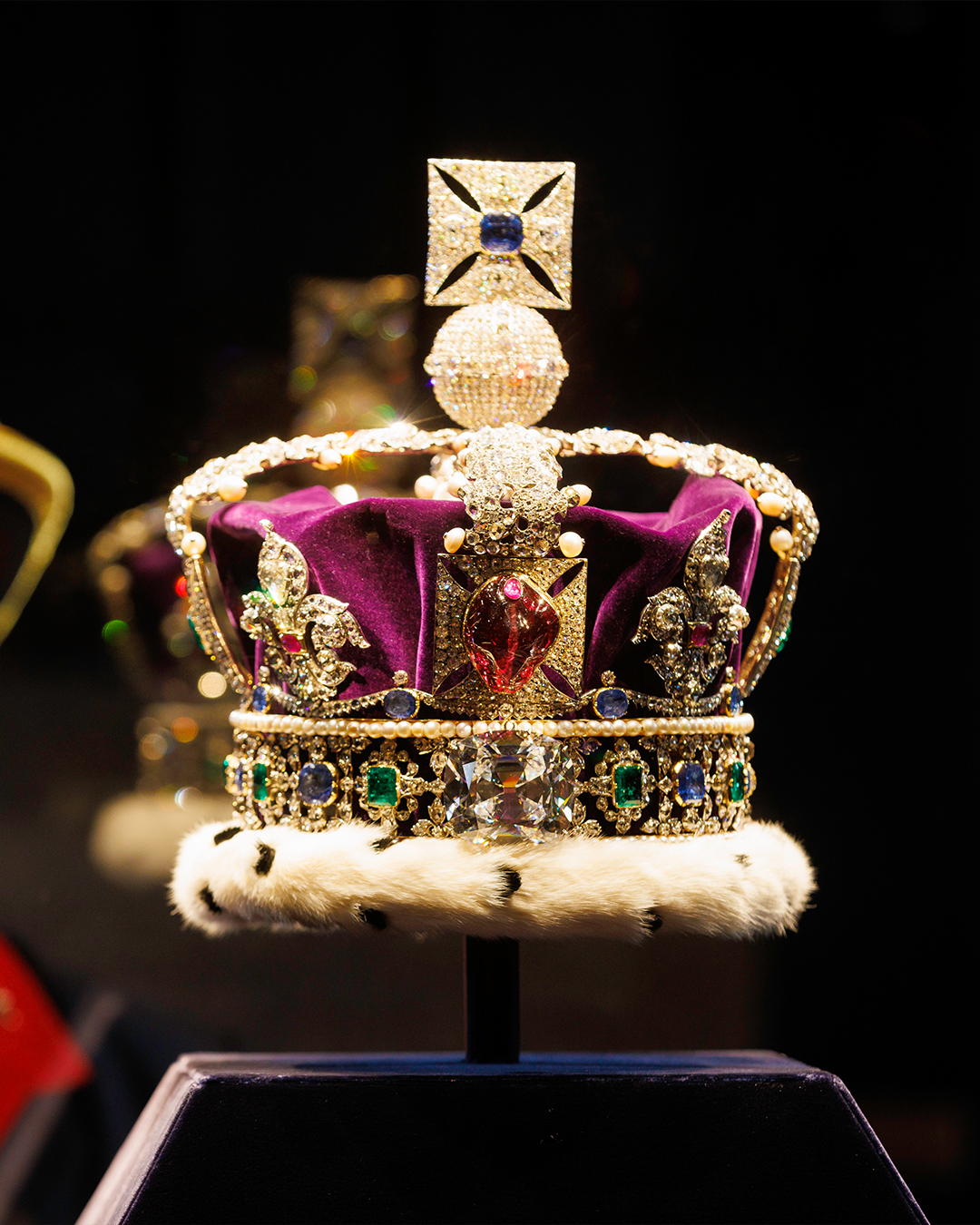
Courtesy of Historic Royal Palaces
With the millions of visitors who see these ‘awe-inspiring objects’ each year – it just goes to show the majesty and the mystery of monarchy and natural diamonds still intrigue and overwhelm us today. I for one can’t wait to go back and soak up the spectacle all over again.
The new Jewel House exhibition opens Friday 26th May and is included in the general admission of The Tower of London.
